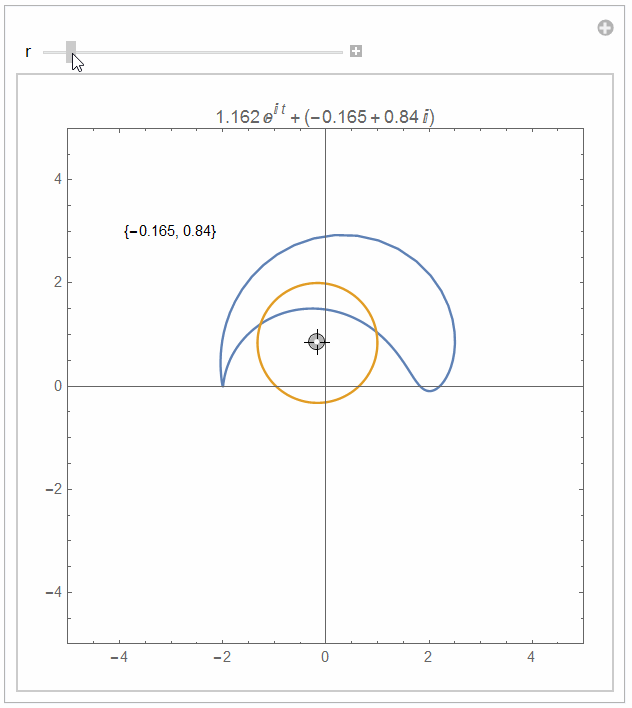Plotting an equation describing a Joukowski airfoil
PlusMinus formats nicely, but it does not have a built-in meaning. You may work around that:
h = 0.08; t = 0.13;
Plot[
Evaluate[
Sqrt[(1/4) + (1/64 h^2) - x^2] - (1/8 h) + {-1, 1} ((3/8) t (1 - 2 x) Sqrt[1 - (2 x)^2])
], {x, -.5, .5}
]

If need be, you could also define your own meaning for PlusMinus:
Clear[PlusMinus]
PlusMinus[a__] := {-1, 1} (a)
3 + PlusMinus[a]
(* Out: {3 - a, 3 + a} *)
As @JM mentioned, however, I suspect that your parametrization may not be the most advantageous; here is a complex parametrization of the Joukowsky transformation (see Wikipedia as well).
The Joukowsky transform is the following transformation of complex numbers:
$$z=\zeta+\frac{1}{\zeta}$$
We can obtain a complex parametrization of the results of the transform $z$ as follows:
Block[{$Assumptions = {chi > 0, eta > 0}, x, y},
zeta = chi + I eta;
{x, y} = Together@Simplify@ReIm@ComplexExpand[zeta + 1/zeta]
]
(* {(chi*(1 + chi^2 + eta^2))/(chi^2 + eta^2),
(eta*(-1 + chi^2 + eta^2))/(chi^2 + eta^2)}
*)

The interesting property of the Joukowski transform is the fact that the transform of a circle passing through $\zeta=1$ and containing in its interior the point $\zeta=-1$ describes the profile of an airfoil. Even more interesting for practical purposes is the fact that the streamlines of the original circular profile (typically easy to calculate) transform to the streamlines of the airfoil profile (otherwise hard to calculate) (see e.g. here).
Here is a quick manipulator to visualize those conditions and find some reasonable starting values for such circles:
Manipulate[
Graphics[{
PointSize[0.02], Point[{{1, 0}, {-1, 0}}],
Circle[center, radius],
Inset["Center=" <> ToString@N@center, {-1, 0.5}],
Inset["Radius=" <> ToString@InputForm@radius, {0.6, 0.8}]
}, Axes -> True
],
{{center, {-1/2, 2/10}}, Locator},
{{radius, 1}, 0, 2, 1/10}
]

A good set of values is, for instance, a circle centered at $(-1/8,3\ \sqrt{31}/40)$ with radius $1.2$. We can use a simple parametrization of a circle ({r Cos[t] + xc, r Sin[t] + yc}) toghether with the transformation results obtained above, and use ParametricPlot to generate a plot of the Joukowski-transformed circle:
ParametricPlot[
{chi (chi^2 + eta^2 + 1)/(chi^2 + eta^2),
eta (chi^2 + eta^2 - 1)/(chi^2 + eta^2)
} /. {chi -> r Cos[t] - 1/8, eta -> r Sin[t] + 3 Sqrt@31/41} /. r -> 12/10,
{t, 0, 2 Pi},
PlotRange -> All, PlotRangePadding -> {Scaled[0.05], Scaled[0.25]},
Frame -> True, Axes -> None,
AspectRatio -> 0.4
]

This is just illustrative.
f[z_] := ReIm[z + 1/z]
Manipulate[
ParametricPlot[{f[Complex @@ v + r Exp[I t]],
ReIm[Complex @@ v + r Exp[I t]]}, {t, 0, 2 Pi},
PlotRange -> {{-5, 5}, {-5, 5}}, Epilog -> {Text[v, {-3, 3}]},
AspectRatio -> Automatic, Frame -> True,
PlotLabel -> (Complex @@ v + r Exp[I t])],
{{v, {0, 0}}, {-4, -4}, {4, 4}, Locator}, {r, 1, 3}]e to get all in one:

I have voted for MarcoB's answer.